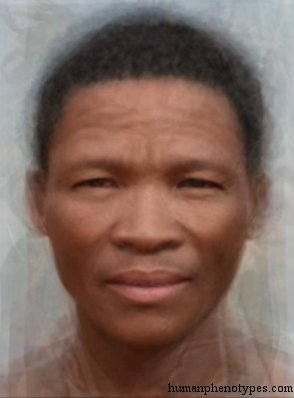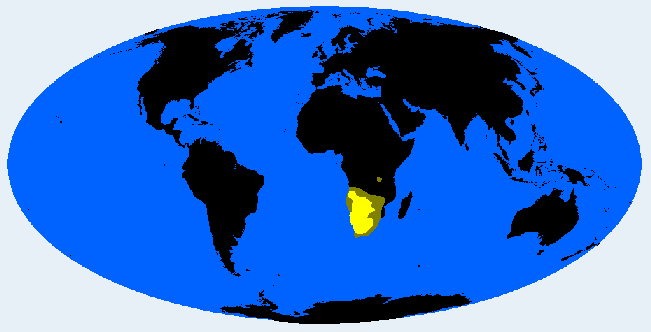Description:
Special type of the hunter-gatherer populations of Southern Africa (Bushmen) with many unique features. Shows the most pronounced adaption to dry climate among all humans. Very ancient and distinct. Stature is short, bodies are lean, some women show steatopygia. The skin is yellow-reddish brown, often wrinkled, peppercorn hair is common, nose very wide, eye folds are frequent, skull medium-long to long and low, hardly prognathous. Compared to the similar Khoids, Sanids are shorter, more infantile, and shorter-faced, skulls slightly shorter, the convex upper lip is more common. Historically widespread across Southern Africa, but has continuously been pushed back by the Bantu and European expansions, and survives only in a few relict groups today. In the Kalahari Desert, the Kalaharid variety is characterised by thinner noses and bodies, in the Southern Karoo steppe the Karroid is more thickset with extremely wide noses. The almost extinct Strandlooper type seems to be an ancestral form.Names:
Sanid (Eickstedt, 1934, 1952; Lundman, 1967, 1988; Knussmann, 1996), Bushman (Deniker, 1900; Coon et al. 1950; Cole, 1965; Vallois, 1968; Debets, 1974; Vogel, 1974) , Boscimana (Biasutti, 1967), Houzouanas ou Boschismane (Desmoulins, 1826).



